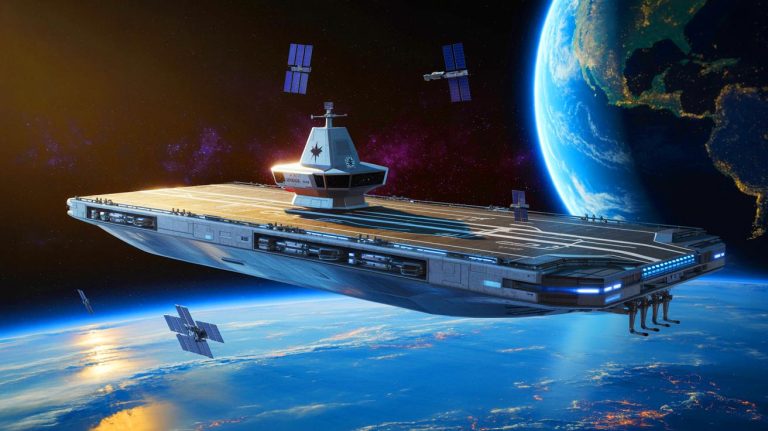| IN A NUTSHELL |
|
The United States is taking a significant leap in space technology with the development of an orbital aircraft carrier, a project that promises to change the landscape of satellite deployment. This ambitious endeavor is spearheaded by Gravitics, in collaboration with the U.S. Space Force, highlighting a strategic focus on space as a critical domain. Amid global tensions and a competitive space race, the U.S. aims to secure its dominance in space exploration and defense. This initiative marks a pivotal moment in the nation’s efforts to maintain technological and strategic superiority in the cosmos.
The Vision Behind the Orbital Aircraft Carrier
Gravitics is at the forefront of this revolutionary project, aiming to transform the way satellites are deployed. The orbital aircraft carrier, funded to the tune of $60 million by the U.S. Space Force, seeks to launch satellites directly from Earth’s orbit. This approach offers a faster, more agile response to national security threats, eliminating the reliance on traditional rocket launches. By having a space-based carrier, the U.S. military can gain a strategic advantage, ensuring that it remains prepared for immediate and future security challenges.
This initiative comes at a time of increasing concern over a potential space arms race. The ability to have a pre-positioned platform in orbit allows the U.S. to deploy satellites as needed, providing flexibility and rapid response capabilities. As the U.S. strengthens its orbital presence, it also demonstrates a commitment to leading in space technology, reinforcing its position as a global leader in innovation and defense.
Enhancing Space Security and Superiority
The orbital aircraft carrier designed by Gravitics provides a secure environment for housing multiple satellites, protecting them from the harsh conditions of space. This protection is vital for safeguarding the sensitive electronics and batteries of satellites, which are essential in today’s era of electronic warfare and cyber threats. By ensuring the safety and functionality of satellites, the U.S. enhances its space security capabilities.
Furthermore, the ability to conceal satellites from adversaries offers a tactical advantage, aligning with the Space Force’s mission of achieving orbital dominance. Gravitics CEO Colin Doughan describes the carrier as a “game-changer,” highlighting its potential to revolutionize military capabilities. This project not only strengthens the U.S. military’s operational readiness but also sets a precedent for future technological advancements in space exploration.
Public-Private Partnerships and Their Impact
The collaboration between Gravitics and the U.S. Space Force exemplifies the growing importance of public-private partnerships in advancing space technology. Gravitics is also working with Axiom Space on a pressurized space module, showcasing its commitment to both defense and commercial solutions. These partnerships are crucial for integrating cutting-edge technologies into national defense strategies, enhancing the U.S.’s position in space.
By joining forces with private companies, the government can leverage innovation to bolster national security while fostering developments with potential civilian applications. The success of such collaborations could open new market opportunities and drive further advancements in space technology. As these partnerships continue to thrive, they may play a key role in shaping the future of space exploration and exploitation.
The Future of Space Exploration
The emergence of technologies like the orbital aircraft carrier signals a new era in space exploration. This advancement has the potential to transform security, surveillance, and communication paradigms, impacting both military operations and private sector involvement. The implications of this technological leap are vast, heralding a shift in how space is utilized and governed.
As the U.S. Space Force and companies like Gravitics prepare for future challenges, questions arise about international cooperation in space. How will these innovations influence diplomatic relations between nations? More importantly, how can we ensure that space remains a domain of shared peace and progress, benefiting all of humanity?
As the United States embarks on this ambitious journey into space, the implications of its technological advancements extend far beyond national borders. The collaboration between the U.S. Space Force and private companies like Gravitics highlights a strategic approach to maintaining space superiority. As these innovations continue to unfold, the world watches closely. How will these developments shape the future of international relations and the shared use of space resources?
Did you like it? 4.5/5 (29)








Wow, an orbital aircraft carrier! Does this mean we’ll have space battles soon? 🚀